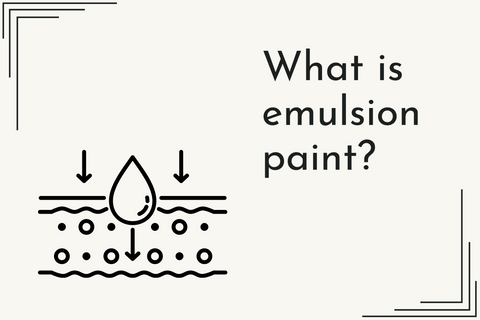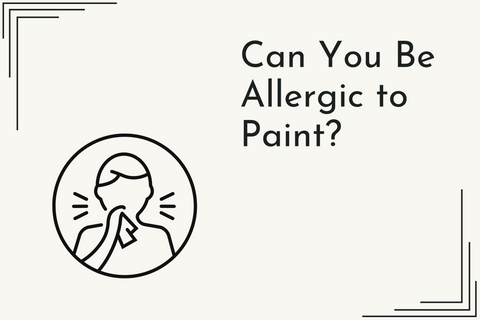There’s nothing more frustrating than when emulsion paint bubbles on the wall. Even if the paint job looked great at first, unsightly blistering in wall paint can sometimes appear hours, days or weeks later.
But why does emulsion paint bubble, and can it be fixed? Usually, issues with emulsion paint bubbling happens due to poor adhesion between the wall and the base coat of paint. There are many potential reasons for this, such as failing to prepare the surface before painting.
In this guide, we’ll discuss the most common causes of paint bubbling on wall and prevent it from happening again. We’ll also share our top tips on how to fix bubbles in emulsion paint.
See our premium emulsion paint:
Auro 555 - Premium Emulsion Paint
What Causes Emulsion Paint to Bubble or Blister?
When a coat of emulsion starts to bubble or blister, it normally indicates an adhesion problem. This means that the paint has lost its bond with the wall, and has begun to pull away. Each bubble is a small pocket of air or water, trapped between the wall and the paintwork.
If the emulsion fails to stick to the surface in the first place, you’ll notice the wall bubbling when painting. However, if it gradually loses adhesion over time, the problem may not be obvious straight away. A painted wall or ceiling may start to blister anywhere from a few hours to several months after painting.
As with most painting problems, prevention is better than cure. Knowing what caused your paint job to bubble will help you ensure it doesn’t happen again. Here are the most common causes of emulsion paint bubbling on walls.
See Also: Silk vs matt emulsion - what's the difference?
1. You Overmixed the Paint
It’s important to stir emulsion before painting, especially if it has been sitting in the tin for some time. Stirring will help to redistribute the pigments and ensure an even finish.
However, if you stir too quickly or vigorously, you may introduce too much air into the paint. This can cause bubbles to form. If you notice lots of tiny wall bubbles when painting, overmixing may be the culprit.
To avoid this problem, stir the paint gently and slowly, for a few minutes at most.
2. The Wall Was Dirty
A common cause of fresh paint bubbling on wall is failing to clean the surface first. Dirt and greasy marks (e.g. fingerprints) can form a barrier between the emulsion and the wall, preventing it from adhering. As the paint dries, it will pull away from any dirty patches, forming a visible blister in the paint.
To prevent this, scrub the wall thoroughly with wall cleaner and a sponge. Allow it to air-dry fully before painting.
Please see our wall cleaner:
Auro 435 Paint & Stain Cleaner 500ML
3. The Room Was Too Hot
If you painted your walls on a warm day, it’s possible that high temperatures caused the paint to bubble. Extreme heat can cause emulsion paint to evaporate unevenly, with the top layer of paint drying out too quickly. When this happens, any moisture or air underneath the paint film can expand, causing blistering to the finished paintwork.
Try to avoid painting walls on hot days, especially in direct sunlight. Ideally, the room should be between 10°C and 35°C.
4. Moisture Is Trapped Beneath the Paint
When moisture becomes trapped beneath the paintwork, it can lead to emulsion paint bubbling on walls. This may occur immediately, if the wall was wet when it was painted. However, water bubbles can also develop long after decorating. There may be many reasons for this, such as:
- Condensation
- Rising damp
- A plumbing leak
- Water ingress from outside the property (penetrating damp)
Damp and water ingress should be professionally addressed before repainting. If the problem is humidity (e.g. in bathrooms and kitchens), use a breathable paint such as Earthborn Claypaint. This will allow moisture to flow through the surface of the paintwork, preventing blistering.
Please see our range of Earthborn Paints:
5. You Didn’t Use a Primer
If the wall is in good condition, it’s not always necessary to use a primer. But in some cases, such as when painting bare plaster, emulsion may have trouble adhering. This can result in the fresh paint bubbling on wall as it lifts away from the surface.
Plaster primer paint or a mist coat can help prevent blistering by helping the paint to form a strong bond with the wall. For emulsion, choose a quality water-based primer such as Auro 505 Grip Coat or Auro 301 Plaster Primer. Alternatively, you can use emulsion paint diluted with 10-20% water.
Ensure the priming coat is completely dry before painting. Applying paint over damp primer may lead to bubbles forming due to moisture.
How to Fix Paint Bubbles on Wall
To fix paintwork that has bubbled or blistered, you’ll first need to identify the root cause. If you break open a blister and there is moisture behind it, you may have a damp problem. This will need to be addressed before repainting (e.g. by having a damp proof course installed).
Once you’re ready to redecorate, follow these steps to repair bubbles in emulsion paint:
- Wearing a dust mask, gently scrape away any loose or flaking paint using a putty knife
- If there are any holes or dents in the wall beneath, apply filler to create a smooth surface
- Sand down the area you’ll be repainting using fine grit sandpaper
- Thoroughly clean and dry the wall, and apply a coat of primer if necessary
- Repaint the surface using a paint .brush (or a paint roller for larger areas). Apply the emulsion thinly and wait for it to dry before adding a second coat.
Avoid repainting in extreme temperatures or humid conditions (above 70% humidity). Open windows to encourage air flow as the paint dries. If you need to remove multiple layers of paint from a solid wall to create a good surface for redecorating, you may wish to use Home Strip Paint and Varnish Remover.
See Also: How to Remove Paint from Walls.
Where Can I Buy High-Quality Emulsion Paint?
At Greenshop Paints, we sell ecological paints and finishes that are better for you, and better for the planet. We specialise in natural, sustainable and eco-friendly products from trusted industry-leading brands including Auro, Earthborn, Treatex and Osmo.
If you’re looking for natural, high-quality emulsion paint, head to the Greenshop Paints online store today. Some of our best-selling emulsions include Auro 555 and Earthborn Lifestyle, both of which boast great durability and are available in a fantastic range of colours. We also have plasterboard primer paint
Click here to request swatches of some of our most popular paints and finishes. For queries or product advice, don’t hesitate to contact us.







